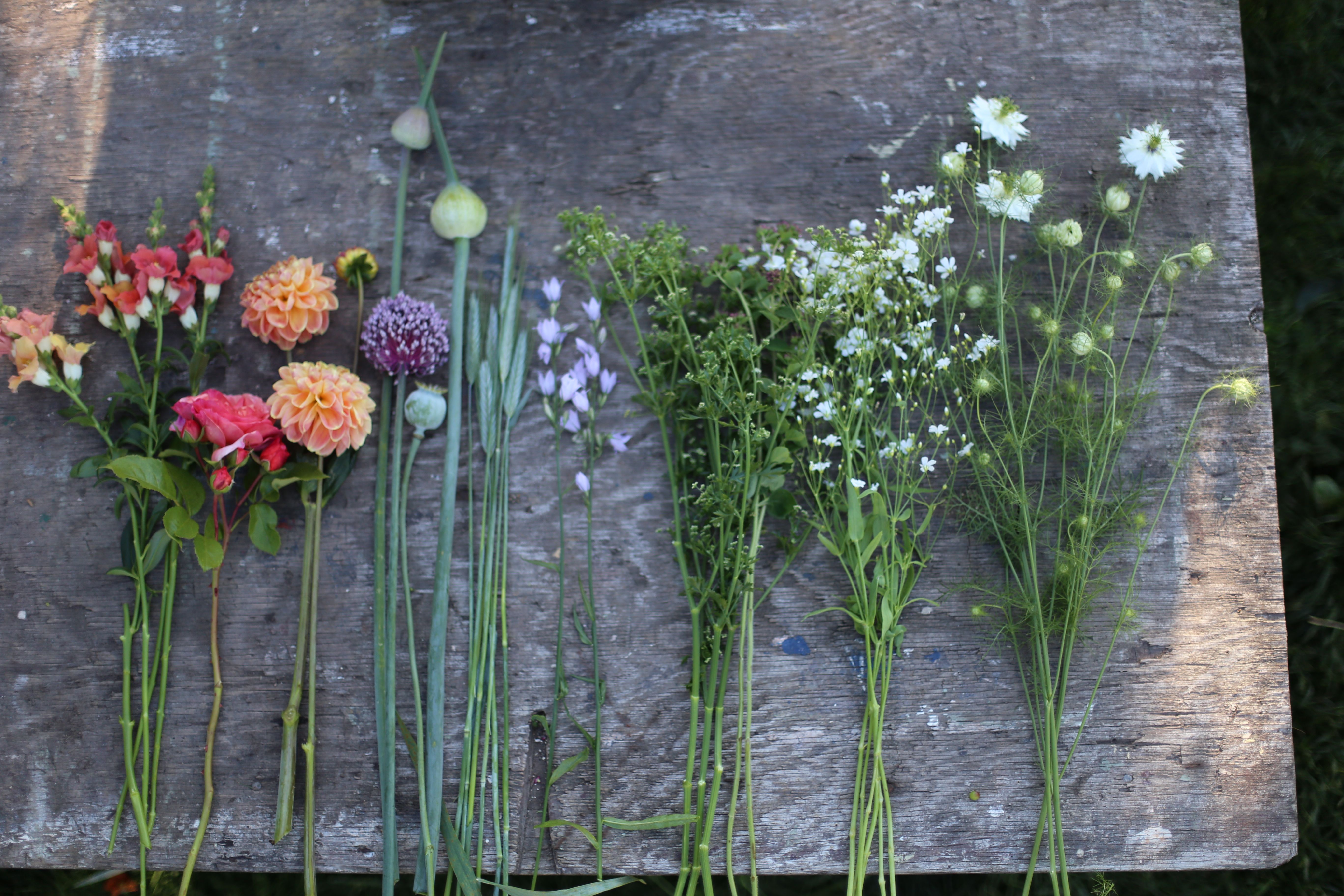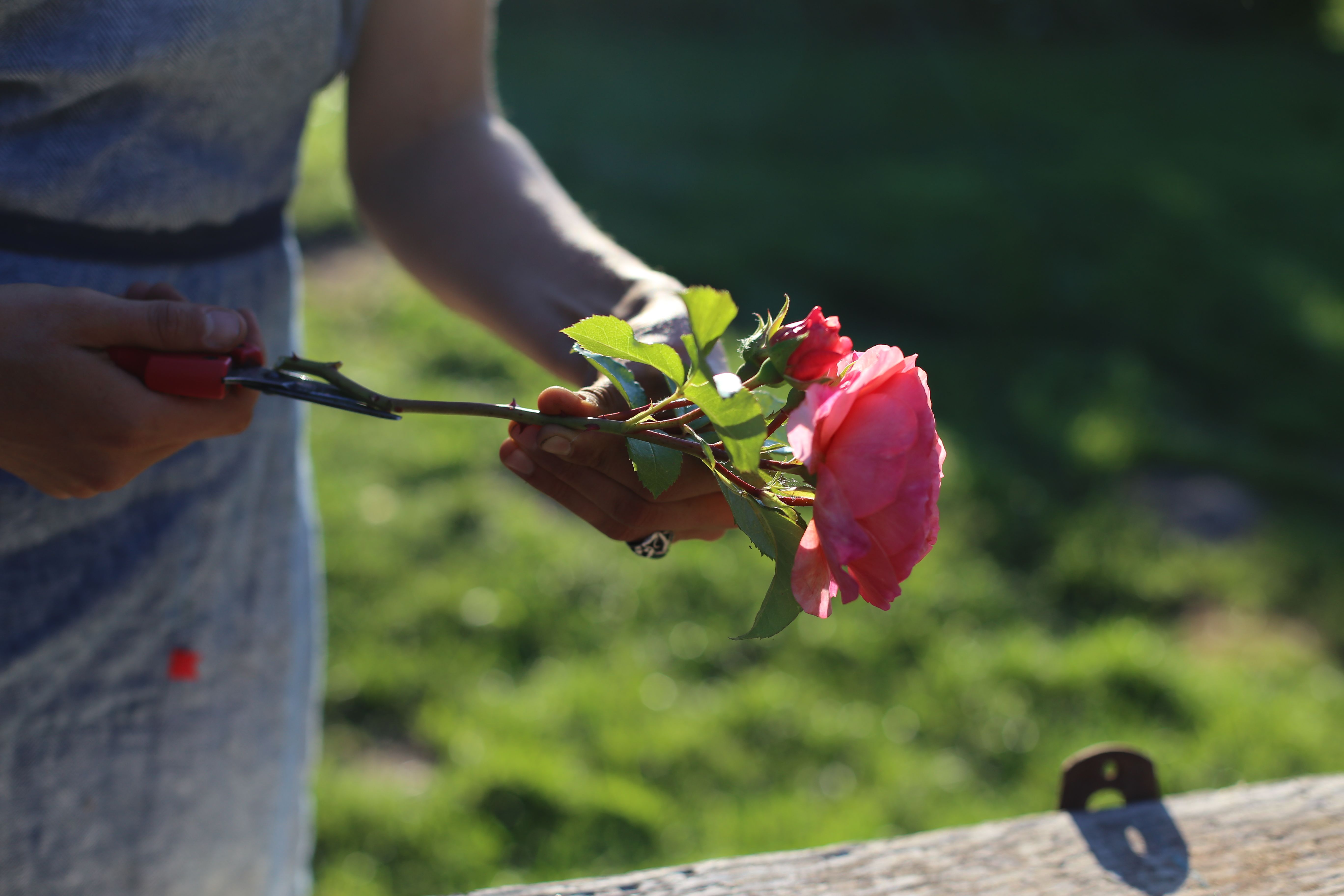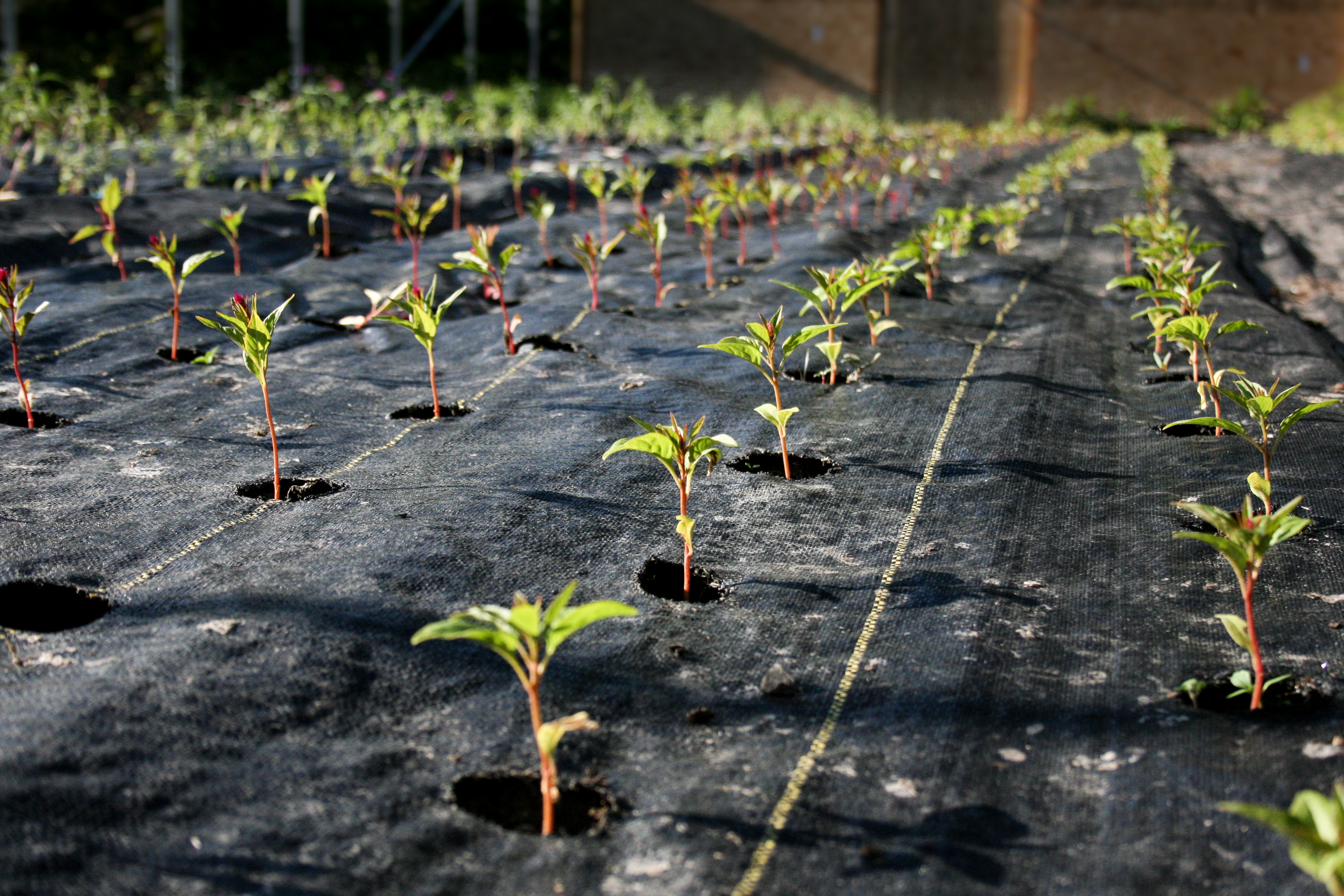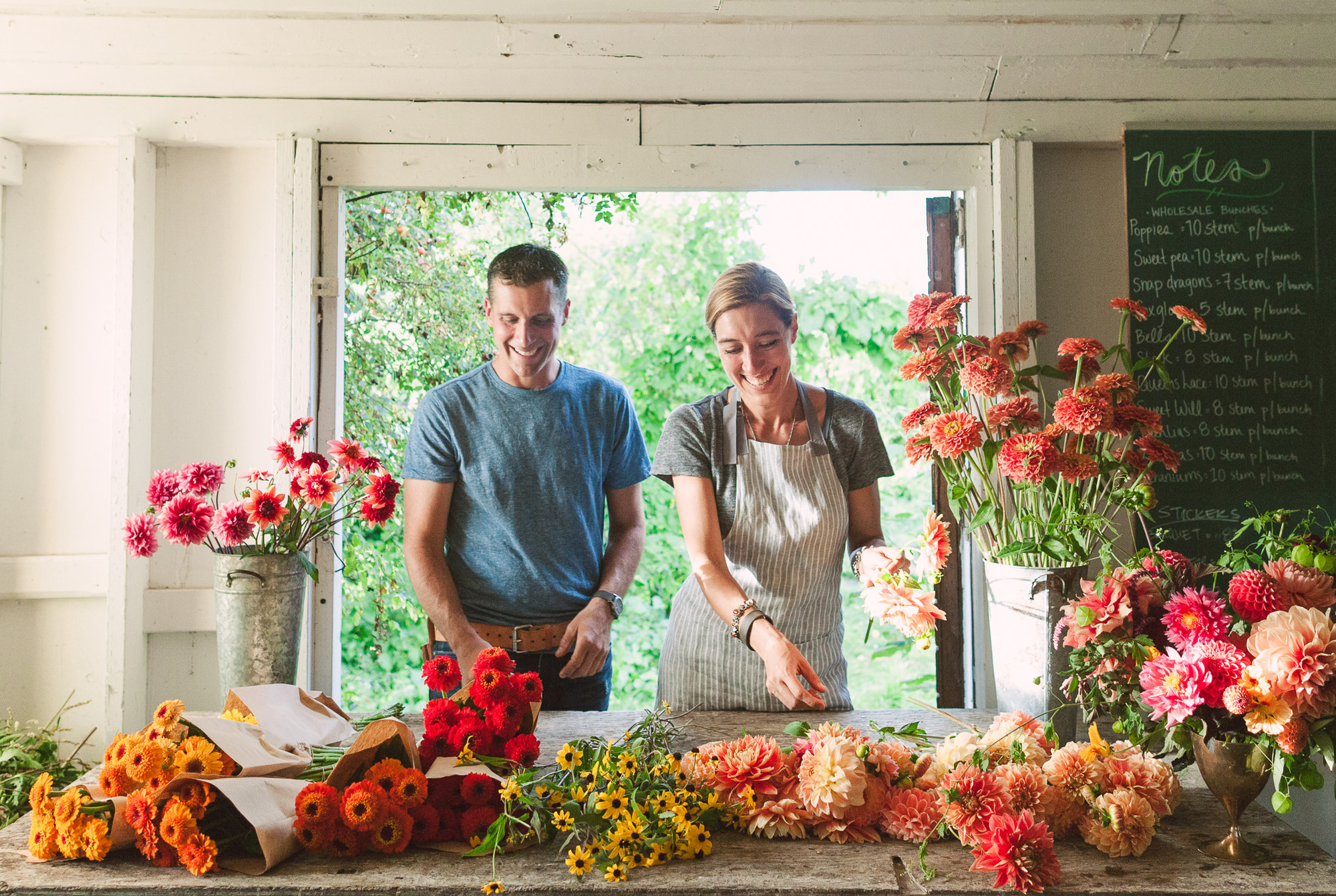Nothing says summer like a fresh bouquet picked straight from the garden. If you don't have a plot of your own to harvest from, a quick trip to the farmers market or local farm stand will certainly do the trick. When choosing ingredients, consider incorporating a few edibles into your mix for a fun twist on the traditional. Oregano flowers, artichoke heads, green beans on the stem, crabapples, basil foliage, parsley seed heads, dill, garlic scapes, and cherry tomatoes are all wonderful candidates. With a mix flowers and interesting foliage, your edible-infused arrangement will be a conversation starter.
What You Will Need
Method
- To begin, cut a square of wax-coated chicken wire, crumple it into a ball, and place it down into your container.
- Fill the container with cool, clean water.
- Gather a nice selection of flowers and foliage. For this arrangement, I've chosen dock, Scented Geranium ‘Chocolate’, raspberry foliage, Crabapple ‘Everest’, viburnum berries, Nasturtium ‘Gleam Salmon’, Snapdragon ‘Chantilly Salmon’, garden roses, Dahlia ‘Crichton Honey’, allium flowers, barley, Campanula ‘Heavenly Blue’, parsley flowers, annual baby’s breath, and love-in-a-Mist.
- Having a nice, large work table with an elevated place to set your bouquet makes the process of arranging much easier.
- To begin, you want to establish to the outline of your bouquet. Here I used nasturtium foliage to mark the widest point for the completed piece.
- After you set the bouquet's dimensions with foliage, start filling around the edges of the container with other textures. Here I added dock and scented geranium.
- Before the container gets too full, be sure to place any large focal blooms with thick stems, like this flowering artichoke.
- Continue adding foliage evenly throughout the bouquet. Here I used crabapples, more nasturtium vines, oregano flowers, and unripe raspberries to create a lush foliage base.
- Now you can begin threading in your color. Here I used salmon-toned snapdragons.
- If you are fortunate enough to source local garden roses, be sure to remove the thorns from the bottom half of the stems so they will slip into the bouquet more easily.
- Next, place the main focal blooms. I was so lucky to have found some gorgeous garden roses for this arrangement!
- Keep filling your bouquet with showy, focal blooms. Here I used matching coral dahlias.
- Add in any last feature blooms before your bouquet gets too full. These beautiful blooming allium provided a unique pop and contrasting color play.
- Lastly, thread in airy, textural elements to add sparkle and movement to your final creation. I used barley, poppy pods, and annual baby's breath.


















